Daniel Orr's Blog, page 23
May 17, 2024
May 17, 1987 – Iran-Iraq War: The U.S. frigate, USS Stark, is struck by two missiles from an Iraqi jet fighter
On May 17, 1987, the USS Stark was hit by two missiles fired by an Iraqi jet aircraft, killing 37 personnel and injuring 21 others. The American ship was part of the Middle East Task Force assigned to patrol off the Saudi Arabian coast during the on-going Iran-Iraq War (September 1980-August 1988). Emergency contingencies saved the ship from sinking, arriving at Bahrain the next day for temporary repairs before returning to the United States.
During the Iran-Iraq War, the United States backed the Iraqiregime of Saddam Hussein. Prior to the war, U.S.-Iraqi relations had been distant,but greatly improved during the conflict. The United States provided Iraq with several billion dollars’worth of economic aid, the sale of dual-use technology, non-U.S. originweaponry, military intelligence, and special operations training.
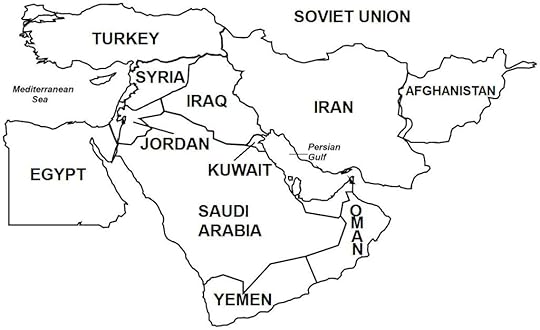
On the other hand, the U.S. had cut diplomatic relations with Iran in April 1980 following the storming by Iranian students of the U.S. Embassy in Tehran (November 1979) and what would subsequently be a hostage crisis lasting 444 days. Relations had been on the decline following the ouster of Mohammad Reza Shah Pavlavi and Iran setting up an anti-American, hard-line theocracy under Ayatollah Khomeini.
U.S. President Jimmy Carter had agreed to let the Shah into the United States, prompting the Iranians to suspect that the U.S. government and the Shah were conspiring to undermine the Iranian Revolution. This suspicion has often been used by the Iranian revolutionaries to justify their claims that the former monarch was an American puppet, and this led to the storming of the American embassy by radical students allied with the Khomeini faction.
For a period following the USS Stark incident, relations between Iraq and the United States were strained. Nevertheless, by mid-1987, both sides had overcome this issue. Although lingering suspicions about the United States remained, Iraq welcomed greater, even if indirect, American diplomatic and military pressure to try to end the war with Iran. For the most part, the Iraqi government believed the United States supported its position that the war was being prolonged only because of Iranian intransigence.
(The Iran-Iraq War was in part brought about by Iran’s transition to a hard-line theocratic regime. Relations between the two countries deteriorated as Iran’s Islamist fundamentalism contrasted sharply with Iraq’s secular, socialist, Arab nationalist agenda. This breakdown in relations was only the latest in a long history of Arab-Persian hostility that resulted from a complex combination of ethnic, sectarian, political, and territorial factors. Click here for more information on the war.)
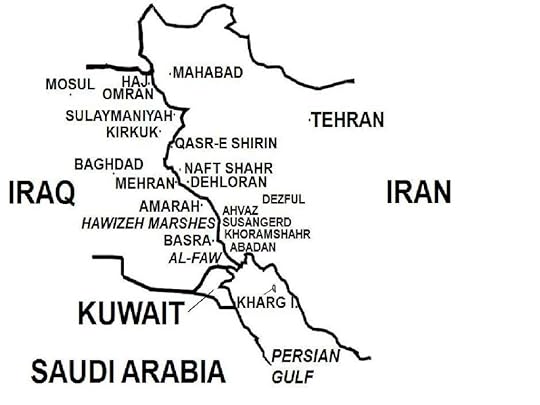
May 16, 2024
May 16, 1997 – First Congo War: President Mobutu flees Zaire
On May 16, 1997, President Mobutu Sese Seko fled Zaire (present-day Democratic Republic of the Congo) in the wake of the First Congo War (October 1996 – May 1997). The war was triggered when in November 1996, Mobutu ordered that Zairian ethnic Tutsis (called Banyamulenge) must leave the country or face death. The Tutsis broke out in rebellion and were soon supported by Rwanda and Uganda (and later Burundi). This alliance was quickly joined by Laurent-Désiré Kabila, the insurgent leader who had for three decades been conducting a low-level rebellion against the Zairian government. Mobutu’s regime was notorious for massive corruption, nepotism, and utter disregard for the socio-economic conditions of the country, and Mobutu himself had amassed a huge personal wealth amounting to billions of dollars stolen from the public coffers.
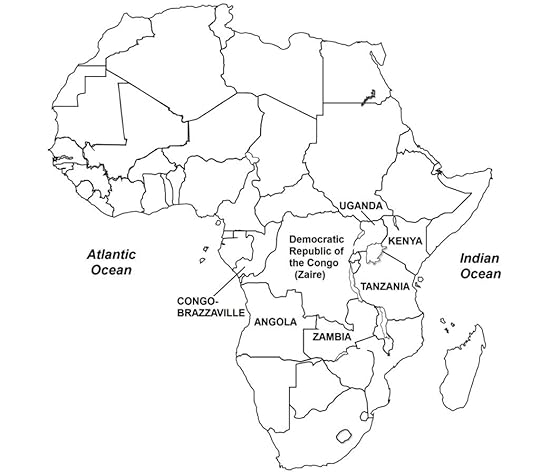
Kabila joined his forces with the Banyamulenge militia; together, they united with other anti-Mobutu rebel groups in the Kivu, with the collective aim of overthrowing the Zairian dictator. Kabila soon became the leader of this rebel coalition. In December 1996, with the support of Rwanda and Uganda, Kabila’s rebel coalition wrested control of the border areas of the Kivu. There, Kabila formed a quasi-government that was allied to Rwanda and Uganda.
When the fighting ended, some areas of Zaire’s eastern provinces had virtually seceded, as the Zairian government was incapable of mounting a strong military campaign into such a remote region. In fact, because of the decrepit condition of the Zairian Armed Forces, President Mobutu held only nominal control over the country.
More critically, President Mobutu had become the enemy of Rwanda and Angola, as he provided support forthe rebel groups fighting the governments in those countries. Other African countries that also opposedMobutu were Eritrea, Ethiopia, Zambia,and Zimbabwe.
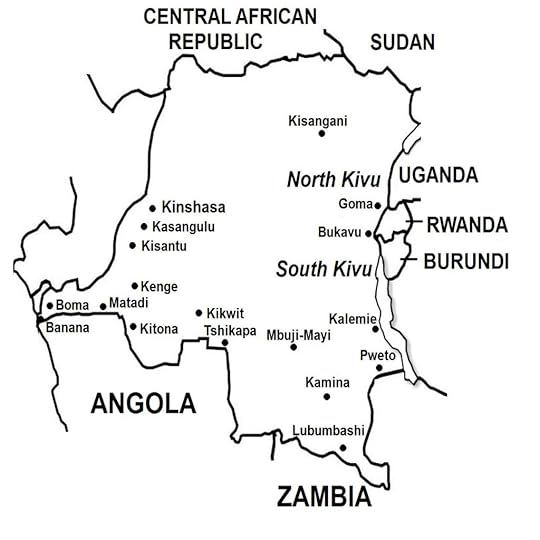
In December 1996, Angolaentered the war on the side of the rebels after signing a secret agreement withRwanda and Uganda. The Angolan government then sent thousands ofethnic Congolese soldiers called “Katangese Gendarmes” to the KivuProvinces. These Congolese soldiers werethe descendants of the original Katangese Gendarmes who had fled to Angola in the early 1960s after the failedsecession of the Katanga Province from the Congo.
Backed by units of the Rwandan and Ugandan Armed Forces, Kabila’scoalition force advanced steadily across central Zairefor the capital, Kinshasa. Kabila met only light resistance, as theZairian Army collapsed, with desertions and defections widespread in itsranks. Crowds of people in the towns andvillages welcomed Kabila and the foreign armies as liberators.
Many attempts were made by foreign mediators (United Nations, United States, and South Africa)to broker a peace settlement, the last occurring on May 16, 1977 when Kabila’sforces had reached the vicinity of Kinshasa. The Zairian government collapsed, withPresident Mobutu fleeing the country. Kabila entered Kinshasaand formed a new government, and named himself president. The First Congo War was over; the secondphase of the conflict broke out just 15 months later.
(Click here more information on the First Congo War.)
May 15, 2024
May 15, 1904 – Russo-Japanese War: Two Japanese battleships, Hatsuse and Yashima, sink after hitting mines laid by the Russian minelayer Amur
On May 15, 1904 on the waters off Port Arthur (now Lushunkou, China),the Japanese battleship Hatsusestruck two mines and sank with the loss of 496 crew. Another Japanese shipYashima also sank after hitting two mines. The incident was part of the ongoingRusso-Japanese War (February 1904-September 1905) for control of southernManchuria and Korea.
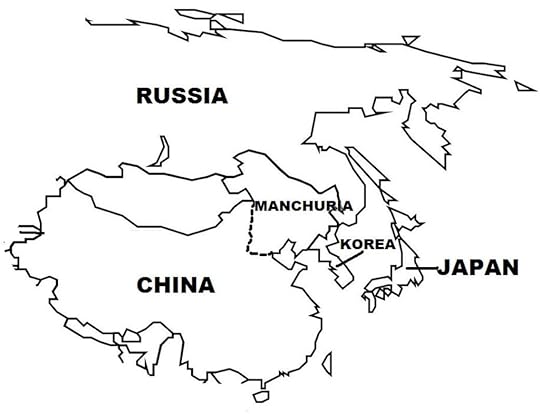 The Russo-Japanese War was fought for control of Korea and southern Manchuria
The Russo-Japanese War was fought for control of Korea and southern ManchuriaSince the outbreak of the war, the Japanese ships had been laying siege on the strong Russian outpost of Port Arthur. The Russian fleet in Port Arthur twice attempted to break out (April and August 1904) but was forced back by the strong Japanese naval presence. On the other hand, the Japanese ships were wary of entering Port Arthur because of the powerful Russian shore batteries. Ultimately, the Japanese captured Port Arthur in January 1905, ending a nine-month siege. Port Arthur’s fall demoralized the Russian Army in Manchuria, and shocked the Russian population.
At the start of the war, the Japanese took control of the Korean Peninsula, meeting no Russian opposition. The Japanese then also advanced into southern Manchuria up to Mukden. Subsequently, Japan was beset with many political and economic problems at home. In Manchuria, the Japanese Army was experiencing serious logistical problems and so decided to abandon plans to advance further north.
The most significant naval engagement of the war was the Battle of Tsushima (May 27-28, 1905), where the Japanese Navy scored a stunning one-sided victory. The Russian Second Pacific Fleet was destroyed, with 10,000 Russian sailors killed or captured, 21 ships sunk, including 7 battleships, and of the 38 Russian ships that started the voyage, only 3 managed to reach Vladivostok. Japanese losses were 700 dead or wounded, and only 3 torpedo boats sunk.
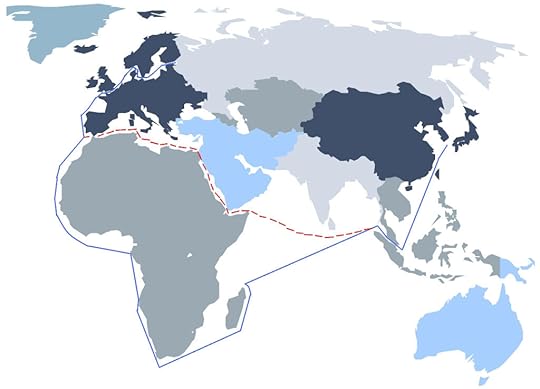 Route of the Russian Second Pacific Fleet
Route of the Russian Second Pacific FleetThe Battle of Tsushima sent reverberations around the World– an Asian nation dealing a crushing defeat on a European power. In Russia,Tsar Nicholas II abandoned his hard-line position against Japan. On June 8, 1905, one week after the Tsushimabattle, Russiaagreed to negotiate an end to the war. By this time also, Russiawas experiencing massive unrest (the Russian Revolution of 1905) as a result ofstrikes, demonstrations, peasant protests, and soldiers’ mutinies.
Meanwhile, Japanwas faced with a deteriorating economy and mounting foreign debt, and alsodesired to end the war. The JapaneseArmy was experiencing logistical problems in Manchuria, and the economicproblems at home could seriously undermine Japan’s ability to wage aprotracted war. As early as mid-1904, Japanhad sought third-party mediation to end the war. U.S. President Theodore Roosevelt agreed toact as mediator, and peace talks opened in Portsmouth, New Hampshirein June 1905.
On September 5, 1905, Russiaand Japansigned the Treaty of Portsmouth, ending the war. By the terms of the treaty, Japan gained control of Korea; Russiawithdrew its forces from Manchuria but retained the Chinese Eastern Railway;and the Russian lease on the Liaodong Peninsula, including Port Arthur,was transferred to Japan. SakhalinIsland was partitioned at the 50thparallel, with Japan gainingthe southern portion and Russiaretaining the northern side.
For Japan,the long-term effects of the war were much more favorable, as it became thesupreme power in East Asia, and its status asan equal of the major European powers was strengthened. In August 1910, Japanabrogated Korea’s nominalindependence (long recognized by the major powers) and annexed Korea,generating no response from the European powers. Japan then continued to expand militarily.
Japan’s victory in the Russo-Japanese War also dashed the then prevailing notion that Caucasians were military superior to Asians. Japan’s feat also gave hope to the colonized peoples of Southeast Asia (e.g. Vietnamese, Indonesians, Filipinos, etc) who were aspiring for independence from their European and American colonial masters. (For more information on the war, click here
May 14, 2024
May 14, 1980 – Salvadoran Civil War: Salvadoran government forces perpetrate the Sumpul River Massacre
On May 14, 1980, units of the Salvadoran Armed Forces and pro-government militias killed some 300-600 civilians believed to be supporters or sympathizers of the outlawed Marxist insurgent group, the Farabundo Martí National Liberation Front (FMLN). The FMLN had as its objectives the overthrow of the government through armed revolution and formation of a communist regime. The site of the massacre was the Sumpul River that separates El Salvador with neighboring Honduras. The civilians were fleeing from the advancing Salvadoran army by crossing the Sumpul into Honduras but were deterred by the presence of Honduran troops on the other side of the river. In the immediate aftermath, both the Salvadoran and Honduran governments denied that the incident took place.
The massacre was one of many such incidents (e.g. the El Mozote Massacre (800-1,200 dead) in December 1981; El Calabozo Massacre (over 200 dead) in August 1982) that took place during the Salvadoran Civil War (1980-1992), a Cold War conflict between the pro-West Salvadoran government and the local Marxist rebel group, the FMLN. The war was resolved following the end of the Cold War when in January 1992 the government and the FMLN signed a peace treaty. With regards to the Sumpul River Massacre, in April 1993, the United Nations published its “Report of the UN Truth Commission on El Salvador”, finding that there was “substantial evidence” that Salvadoran forces “massacred no less than 300 unarmed civilians” and that “the massacre was made possible by the cooperation of the Honduran armed forces.” It noted that “Salvadorian military authorities were guilty of a cover-up of the incident”, and described the massacre as “a serious violation of international humanitarian law and international human rights law”.
The peace agreement also established a fact-finding body,the United Nations Commission on the Truth for El Salvador (“TruthCommission”), to investigate “serious acts of violence…and whose impact onsociety urgently demands that the public should know” and makerecommendations. Some 30,000 written andoral complaints of human rights violations were received and processed by theTruth Commission, which released its report on March 15, 1993. The report implicated the Salvadoran militaryand state security forces in 95% of all the human rights cases filed, while theFMLN was named in 5% of these cases.
The Inter-American Commission on Human Rights (IACHR), thehuman rights branch of the Organization of American States (OAS), in its rulingin October 2012 regarding the El Mozote Massacre, has stated that El Salvador’samnesty law must not violate international laws; as such, the IACHR has askedthe Salvadoran government to investigate the El Mozote Massacre. Earlier in December 2011, President MauricioFunes (of the FMLN Party) issued, in behalf of the government, a public apologyto El Mozote residents in a town ceremony.
The war had enormous repercussions on the population. Some 75,000 civilians (mostly peasants) werekilled; 20,000 rebels and 7,000 government soldiers also lost their lives. About one million of the country’s totalpopulation of six million people lost their homes and became internallydisplaced. Tens of thousands fled tonearby countries, such as Honduras,Guatemala, Nicaragua, and Mexico. About one million entered as refugees inwestern democratic countries in Europe and North America, with most eventuallysettling in the United States.
(The “Farabundo Marti” in FMLN was the name of a Salvadoran Marxist-Leninist revolutionary who in 1932 led a failed peasant uprising in El Salvador’s western provinces. Government forces captured and executed Marti and then carried out a campaign of extermination against the Pipil indigenous population, whom they believed were communist supporters of the uprising that was aimed at overthrowing the government. Some 30,000 Pipil civilians were killed in the military repression.)
May 13, 2024
May 13, 1940 – World War II: Queen Wilhelmina of the Netherlands flees to Britain after the German invasion
On May 13, 1940, with Dutch military resistance faltering from the German onslaught, Queen Wilhelmina and her court, together with the Dutch government, were evacuated by a British Royal Navy ship to Britain, where they established a Dutch government-in-exile that functioned for the rest of the war.
At various times in the development of Fall Gelb (theplanned German invasion of Western Europe), the Netherlandsor only part of it was considered, since the Germans planned that their mainthrust would be through Belgiumon the way to their final objective, France. However, the Germans (as did the Allies) sawthe western part of the Netherlands as the northern end of a battle line if warwould break out, and which therefore had to be defended against a potentialflanking maneuver by the enemy. For Germany, especially Luftwaffe head HermannGoering, the air bases in the Netherlandscould be used to launch bombing raids on Britain,much the same way that the British, if they captured the Netherlands, could use these bases to attack Germany.
In World War I, the Dutch policy of neutrality had beenrespected by the belligerents, and the Netherlands was not invaded. As a result, with increasing tensions inEurope during the 1930s and even after war broke out in September 1939, theDutch continued to hope that their country would be spared the horror anddestruction that their neighboring countries had suffered in the Great War.
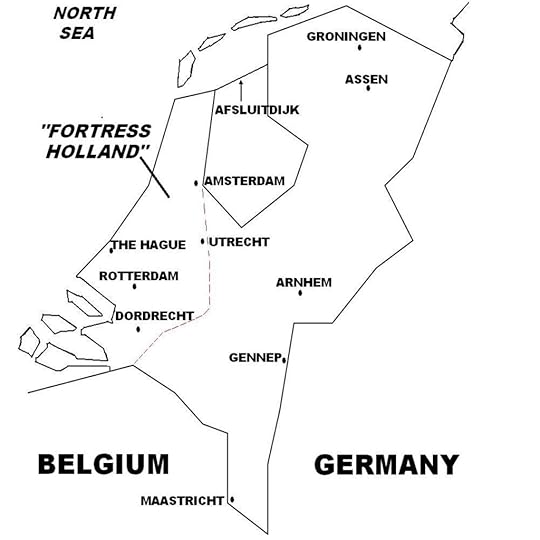 Battle of the Netherlands
Battle of the NetherlandsThe Netherlandswas not militarily prepared for war, and only began to upgrade its World WarI-era war capability in 1936, belatedly after nearby countries Germany, France,and even Belgiumwere already spending large amounts of money on their respective armedforces. With war looming by the late1930s, the Netherlands hadgreat difficulty purchasing weapons, as deliveries from Germany were deliberately stalled by the Nazigovernment, and the Allies, particularly France, refused to sell weaponswithout the Netherlandsfirst joining the Allies.
Hitler was fully aware of Dutch unpreparedness for war, andpredicted that the Netherlandswould fall in 3-5 days. Thus, for theattack on the Netherlands,the Germans assembled its weakest force, the 18th Army, among all the forcesinvolved in Fall Gelb. An importantcomponent were the airborne assault units (paratroopers and airborne infantry)which were assigned to seize key sites inside Fortress Holland, and captureDutch Queen Wilhelmina and the Dutch government at The Hague in order to forceDutch surrender within one day.
On May 10, 1940, Germanyinvaded the Netherlands,which formed part of Fall Gelb, the simultaneous coordinated German offensivesinto France and the twoother Low Countries, Belgiumand Luxembourg. The Germans crossed the border into the Netherlands along two points: German 18th Armyat Gennep and German 6th Army at Maastricht. German 6th Army, which was the more powerful,was not assigned to the conquest of the Netherlands,but instead proceeded from Maastricht across theborder into Belgium,its real target.
The airborne operations, which highlighted the German aim toquickly force Dutch surrender, was launched also on May 10, with paratrooperand glider infantry units penetrating Fortress Holland by seizing the bridgesat Moerdijk, Dordrecht, and Rotterdam, and the Waalhaven airfield nearRotterdam and the three airfields (Ypenburg, Ockenburg and Valkenburg) near TheHague. The Dutch offered stiff resistanceat The Haguethat broke off the German attack. Dutchforces then recaptured the three airfields and inflicted heavy losses on theGermans, including over 2,500 killed, wounded, or captured, and 175 airtransports destroyed or damaged.
On May 14, the commander of German forces at the Rotterdam front demandedthat the Dutch defenders in the city lay down their weapons and surrenderthemselves and the city, or face an all-out German infantry, armored, and airassault. Negotiations followed, and as asecond German ultimatum was being delivered following the Dutch returning thefirst ultimatum because of a technicality, German bombers appeared on the skyabove Rotterdam.
By this time in Berlin,Hitler chafed by what he saw was the slow progress to bring about Dutchsurrender, and as a result, the Luftwaffe sent 90 heavy bombers to bombard the Rotterdam. In thebombing, called the “Rotterdam Blitz”, a large section of the city wasdestroyed, causing 900 persons killed, 85,000 homeless, and the loss of 25,000houses, 3,000 buildings, and dozens of churches and schools. Immediately thereafter, the Dutch forces at Rotterdam surrendered,and the Germans entered the city. The Rotterdam bombing had a devastating effect on Dutchmorale: when the Wehrmacht threatened the cities of Utrechtand Amsterdam with a similar fate, the Dutchhigh command gave up the struggle, and on May 15, 1940, the Netherlands surrendered.
Fighting continued until May 19, when the Germans expelledFrench forces still fighting in Zeeland Province in the extremesouthwest. The German 18th Armythereafter joined the invasion of Belgium, providing the northernflank of the German advance there.
May 12, 2024
May 12, 1942 – World War II: German forces repulse a Soviet offensive at the Second Battle of Kharkov
Following the failure of Operation Barbarossa (Germany’splanned lightning conquest of the Soviet Union in 1941), Stalin was soencouraged by the Soviet counter-attack that saved Moscow that he ordered more operations be conducted.He intended these thrusts to form part of a general counter-offensive atspecific points from north to south of the frontline.
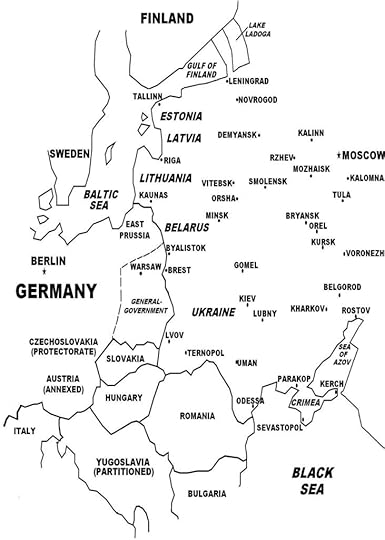 Operation Barbarossa
Operation BarbarossaThese operations were unsuccessful and disastrous to the RedArmy: at Demyansk (February-April 1942) and Kholm (January-May 1942), trappedGerman forces, supplied by air for several weeks, repulsed Soviet attempts toeliminate the pockets; a Soviet counter-offensive (January-April 1942) to liftthe siege of Leningrad led instead to the attackers being encircled anddestroyed; a Red Army operation aimed at recapturing Kharkov (in northeasternUkraine; Second Battle of Kharkov, May 1942) instead led to six Soviet armiesbeing trapped and 300,000 casualties, including the destruction of 1,200 tanks,2,000 artillery pieces, and 500 aircraft, for the German loss of 20,000 troopsand 50 planes; and the failure of the Red Army to recapture the Crimea(December 1941-May 1942).
May 11, 2024
May 11, 1944 – World War II: The Allies make a fourth major attempt to break through the Gustav Line
On May 11, 1944, the Allies launched Operation Diadem tobreak through the Axis defences on the Gustav Line. The Gustav Line was themajor defence of three that was collectively called the Winter Line. The WinterLine itself was one in a series of defences based on German strategy thatrelied on the natural features centered on the ApennineMountains that forms a “spine” alongmuch of the length of Italy.
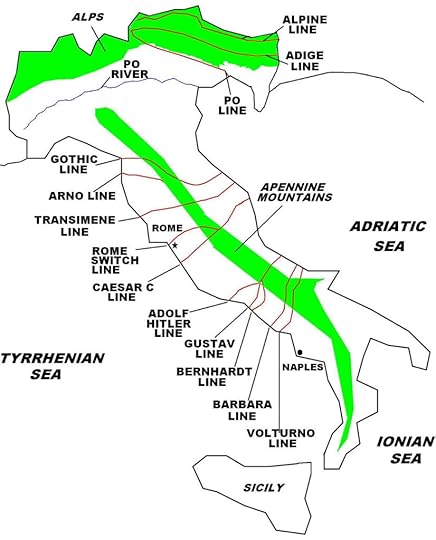 German strategy for the defense of Italy relied on the natural defensive features, particularly the Apennine Mountains which forms a “spine” along much of the length of Italy, as well as the numerous rivers; to the north, by the time of the Allied attack on the alpine region in northern Italy, German defenses verged on complete collapse.
German strategy for the defense of Italy relied on the natural defensive features, particularly the Apennine Mountains which forms a “spine” along much of the length of Italy, as well as the numerous rivers; to the north, by the time of the Allied attack on the alpine region in northern Italy, German defenses verged on complete collapse.Successive Allied attacks since January 1944 had failed tobreach the Gustav Line. But on May 19, 1944, a concentrated Allied offensivecombining U.S.5th and British 8th Armies finally breached the Gustav Line, forcing German10th Army to fall back.
Just days later, May 23, U.S. forces that had had also beenbottled up for months at Anzio broke out from the beaches and advancednorthwest toward Rome instead of attacking northeast to cut off German 10thArmy, as planned. As a result, theAllies failed to encircle German 10th Army at the Gustav Line. German 10th Army escaped and, together withGerman 14th Army from Anzio, soon establishednew positions in northern Italy. The Allied planning had also placed Rome inside the American sector, and not the British;instead, the latter were tasked to bypass Romeand pursue the retreating Germans.
On May 23, 1944, the Allies broke through the last of the three Winter Line positions, the Senger Line (renamed from the Adolf Hitler Line). Meanwhile, elements of U.S. VI Corps advancing on Rome were stalled by strong German resistance at the Caesar C Line, but exploited a gap and broke through on June 2, 1944. American units entered Rome unopposed on June 4, 1944, which had been vacated by the Germans on orders by Hitler, who balked at another Stalingrad-type attrition battle in the Italian capital. Rome, which had been declared an “open city” and thus undefended, also had been subject to constant Allied air bombardment. The glory attached to capturing Rome, which had predominated throughout the Allied campaign, was upstaged just two days later, June 6, 1944, when the Allies launched the much more strategically important Operation Overlord, beginning with the amphibious landings on Normandy aimed at the re-conquest of France and occupied Western Europe, and ultimately the defeat of Germany.
May 10, 2024
May 10, 1941 – World War II: Rudolf Hess parachutes into Scotland to try and negotiate a peace treaty between Britain and Germany
One of the most bizarre events of World War II occurred on May 10, 1941 when Rudolf Hess, Deputy Fuhrer of German leader Adolf Hitler, parachuted into Scotland following a solo flight from Germany. His mission: to negotiate a peace treaty between Britain and Germany.
Hess was a long-time member of the Nazi Party and a staunch Hitler associate, participating in the Beer Hall Putsch, a failed Nazi attempt to overthrown the government of Bavaria, and assisting Hitler in the writing of Mein Kampf, the future Fuhrer’s autobiographical book that outlined Hitler’s political plans for Germany. He signed into law the 1935 Nuremberg Laws that stripped German Jews of their rights as well as the instruments for lebensraum, the German plan for expansion in the east. In 1939, Hess was third in line to succeed Hitler next to Luftwaffe chief Hermann Goring.
During his flight, he was able to evade the heavily defended skies over Britain, but ran short of fuel to his destination and was forced to parachute. He was captured and detained by British authorities and on interrogation, stated that he had come to meet with the Duke of Hamilton (mistakenly believing the latter to be an opponent of the British government) to discuss a possible peace treaty between Britain and Germany. Under this arrangement, Britain would allow Germany a free rein in continental Europe, while Germany would allow Britain to keep its overseas possessions. It must be noted that at that time, the Battle of Britain (the failed German plan to bomb Britain into submission preparatory to a cross-channel invasion), had wound down and Hitler was now fully focused in the east, having just invaded Yugoslavia and Greece (April 1941) and planning the massive invasion of the Soviet Union, slated for June 1941.
When word about Hess’s flight reached Germany, Hitler was furious, stripped Hess of his positions, and ordered that Hess be shot on sight if he returned and portrayed as a madman who flew to Scotland on his own. The German press subsequently depicted Hess as “deluded” and “deranged”. In the aftermath, some speculation arose that Hess had indeed been officially sent to broker a treaty, but failing that, Hitler could disavow involvement in the plan. The British government rejected such speculation. Even so, Soviet leader Joseph Stalin continued to believe that the British had concocted the whole incident.
Hess was held in custody for the remainder of the war and then was returned to Germany in 1946 to stand trial in the Nuremberg Trials. He was found guilty of crimes against peace and conspiracy to commit crimes, and was handed down a life sentence. He served his sentence in the notorious Spandau Prison until his death by hanging suicide in August 1987, at age 93. (Speculation arose that he was murdered, pointing to his advanced age, that he could not have been physically able of hanging himself.)
May 9, 2024
May 9, 1946 – World War II: King Victor Emmanuel III of Italy abdicates
A major casualty of World War II was the Italian monarchy. When World War II broke out in September 1939, Italy remained neutral. But by May 1940 with France verging on defeat by the German onslaught, Italian Prime Minister Benito Mussolini impressed on King Victor Emmanuel III that by siding with Germany and entering the war, Italy would become the dominant power in the Mediterranean. The king agreed, and Italy’s fate was sealed – for the worse.
Mussolini and the king had ignored their military commanders’ counsel that Italy was unprepared for war. As a result, the Italian army experienced a series of disastrous defeats. As Italian defeat loomed and with his popularity waning, King Victor Emmanuel III fired Mussolini as Prime Minister in July 1943. At the same time, the king sent out feelers to the British and Americans. In September 1943, Italy signed an armistice with the Allies, and declared war on Germany the following month.
But the king feared that his reputation had suffered considerably because of his previous support of Fascism. Thus in April 1944, Victor Emmanuel ceded most of his powers to his son, Crown Prince Umberto. His intent now was to save the monarchy itself. To further his cause, in May 1946, he abdicated in favor of Umberto II. The move failed as on June 2, 1946, in a nation-wide referendum, Italians voted to adopt a republican system. Monarchical rule ended, and the Kingdom of Italy was no more.
May 8, 2024
May 8, 1945 – World War II: Germany surrenders to the Allies
By early 1944, the United States, Britain, and the Soviet Union began discussing the proposed surrender document in light of the imminent defeat of Germany. In July 1944, a final text of “unconditional surrender” was finalized.
By May 1945, Germany verged on total defeat with Adolf Hitler dead by his own hand, and the German Army defenseless against the fast-approaching Soviets from the east and Western Allies from the west. German Admiral Karl Donitz, who had succeeded as Head of State as stipulated in Hitler’s last will and testament, made plans to bring the war to an end by surrendering his Army to the Western Allies but not to the Soviets. But his armies were scattered in several large and small pockets from France and the Low Countries to Greece and the Baltic region, as well as in Germany including nearby Poland, the former Czechoslovakia, and Austria.
German commanders in the west, on their own volition or with prompting from Donitz, surrendered to the Western Allies: those in Italy and Western Austria on April 29, 1945, effective May 2, 1945; those in northwest Germany, Netherlands, and Denmark on May 4, 1945, and those in Bavaria and southern Germany on May 5, 1945. As a result, fighting in the west quickly ended. On the other hand, German units facing the Soviets continued to engage in battle, hoping to make a fighting retreat to the west to surrender to the Western Allies.
U.S. General Dwight D. Eisenhower, over-all commander of Supreme Headquarters Allied Expeditionary Force, detected Donitz’s plan, and not wanting the Soviets to suspect that the Western Allies intended to make a separate peace with the Germans, ordered that henceforth no partial surrenders will be made and that the German high command must agree on a complete surrender to the Allies, including the Soviets. Donitz complied and the signing of a surrender instrument was made in Reims, France, on May 7, 1945.
The Soviets took issue with some stipulations in the surrender instrument, as well as the location of the signing itself. They insisted that the formal complete and unconditional surrender must take place in Berlin, the German capital and that the text must place greater emphasis on the Soviet contribution to the war effort. As a result, a second surrender instrument was signed on May 8, 1945.
(Technically, the surrender document was signed at just after midnight on May 9 but was backdated to May 8 as the German surrender had already been broadcast.)



